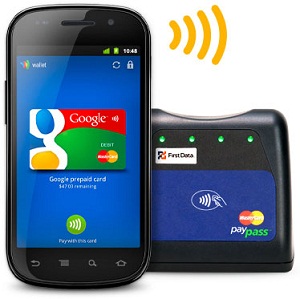In a Mountain View convenience store, Marc Freed-Finnegan takes a bottle of water up to the cashier, who inspects by the scanner and reveals the price. Freed-Finnegan feels his smartphone to a gray artificial sensor labeled “PayPass,” and “Information Sent” emerges on his phone’s screen, with a MasterCard picture and a few digits of his card number.
Freed-Finnegan, who supervises the upcoming Google Wallet service, expected to become accessible to the public for the first time later on this month, has now paid with his phone.
Google Wallet uses a technology known as Near Field Communication, short-range transfer systems that can pass on secure credit card data within a span of about 1.6 inches, which allows a smartphone to become an effective virtual credit card or prepaid cash card.
The latest Google service, just one of the numerous new technologies aiming to turn smartphones into payment devices, initially can be bought by a select group. Clients of a Samsung Nexus S Android phone on the Sprint network — but Google is hoping that it can slowly extend that audience to other phones, wireless carriers and credit card businesses.
The Wallet service eventually comes with bundle payments with online discount tenders and loyalty programs, so one usage of a consumer’s phone at the frozen yogurt store could concurrently provide a payment, cash in a discount coupon and note down the purchase for the store’s customer loyalty point program.
Freed-Finnegan says most people’s wallets are a mess and that they are doing something about it.
 Google Wallet is just among the new mobile payment technologies that are going to be offered by startups and established companies, giving the smartphones another ability — turning out into virtual billfold or pocketbook, as well as a message and information device, rolled into one.
Google Wallet is just among the new mobile payment technologies that are going to be offered by startups and established companies, giving the smartphones another ability — turning out into virtual billfold or pocketbook, as well as a message and information device, rolled into one.
Almost everyone thinks that wallet will stay forever, but while consumers have long managed to use mobile apps in buying things online with a phone as they would on a desktop computer. The new proximity technologies such as NFC will soon allow the phone to act like a credit or debit card, becoming the definite payment tool in bricks-and-mortar stores.
Other companies that are also innovating the smartphone into a wallet include the following:
Isis, a joint undertaking of AT&T Mobility, T-Mobile USA and Verizon Wireless, say it will introduce the first trials of its NFC-powered smartphone payment system in the first half of 2012, with support from Visa, MasterCard, Discover and American Express.
Square, a San Francisco-based startup presented by Twitter co-founder Jack Dorsey, by now provides hardware, allowing merchants on the usage of an iPad, iPhone or Android phone to swipe credit cards, also a mobile app that allows consumers to pay by presenting their name and photo to a partaking merchant.